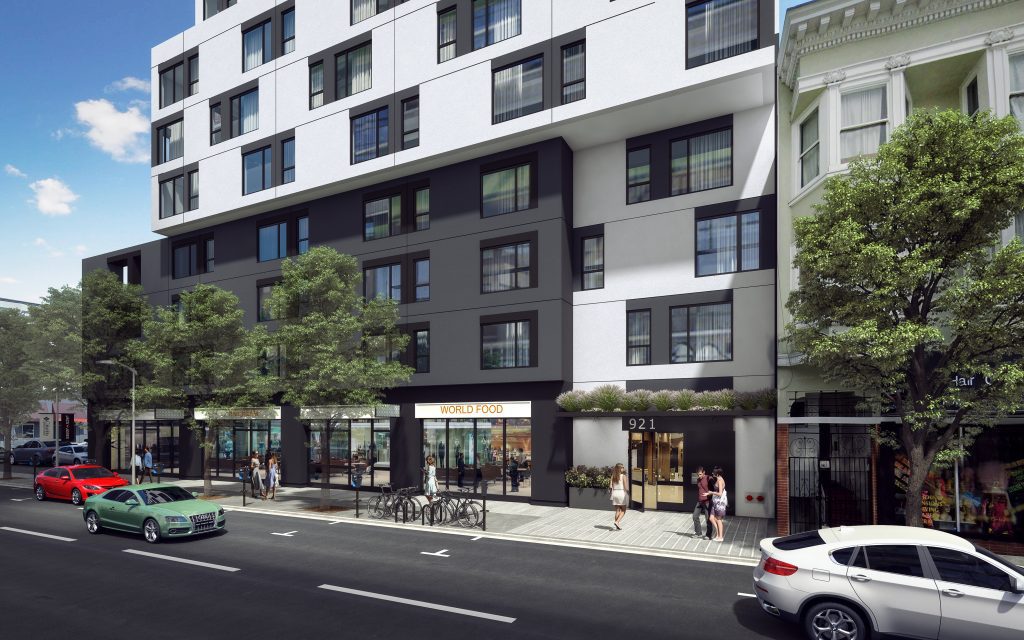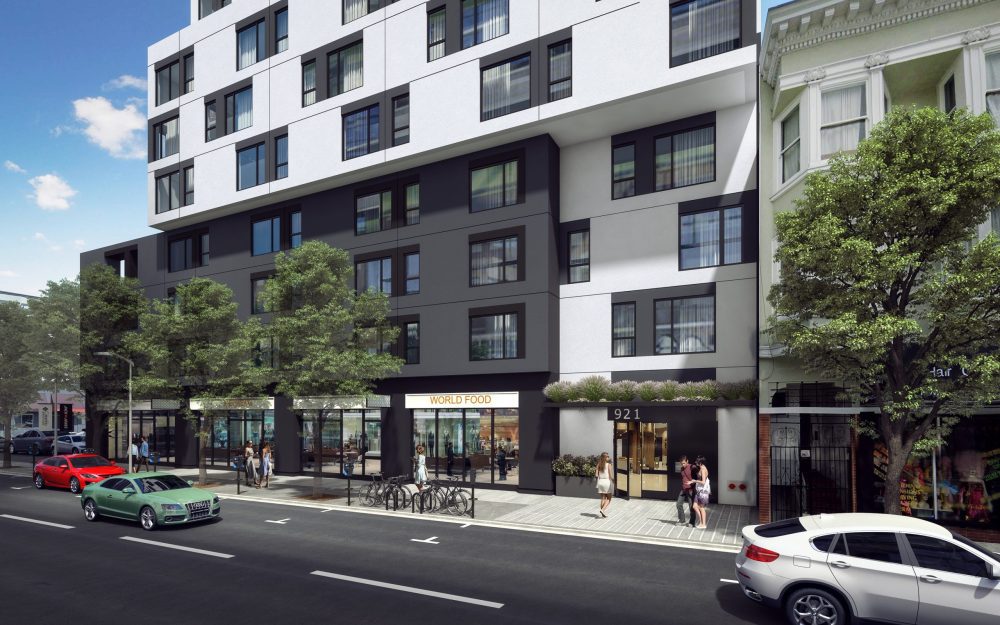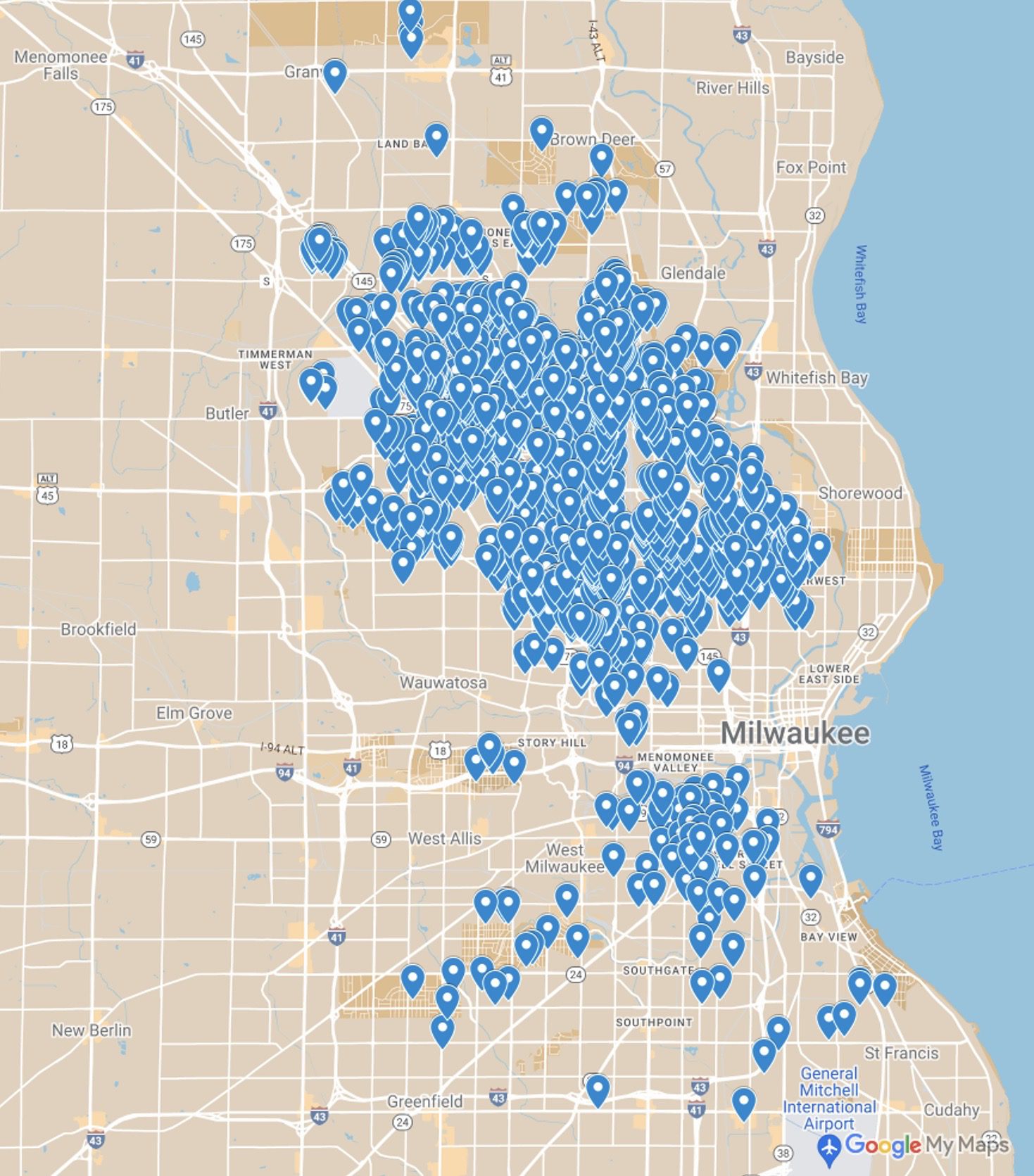This article is part of the Under the Lens series

A rendering of 921 Howard, one of Curtis Development’s projects under construction. Photo courtesy of Perry Architects
Last year, the Bay Area planning organization SPUR published a detailed plan for addressing the region’s housing and transportation crises. The report included a call for a new type of developer: a mission-driven, for-profit developer who would work for a set fee rather than for a percent of profits, as a means to achieving greater affordability.
SPUR attributed this idea to Charmaine Curtis.
At the helm of her own development firm, Curtis Development, Curtis has had a distinguished career on both sides of the for-profit/nonprofit line. Fresh from planning school, she started her career in development working with Rick Holliday, one of the original employees of Bridge Housing, when he was in the process of building a new development company. In her words, she “got bit by the development bug”—it was the perfect place for someone who was a jack-of-all-trades and enjoyed juggling the many and varied aspects of the development process. She was also determined to prove that an African-American woman could succeed in an industry that was—and still is—predominantly white and male.
Over two decades, she served as the first director of housing development at Mercy Housing, and the president of A.F. Evans Development, developers from different sectors who have each had a lasting impact on the affordable housing industry in Northern California. She did the math on one of the earliest tax-credit projects in Berkeley, and supported and learned from “risk-taking nuns” like Mercy’s late Sister Lillian Murphy. She wasn’t just on the frontlines of affordable housing development—her career and her projects have touched on some of the most challenging urban development issues, including transforming previously industrial areas to mixed-use neighborhoods. Like many emerging developers without deep financial resources, she was heavily affected by the financial crash of 2008—what she quietly calls a “traumatic professional episode.” And she is acutely aware of what it is to “develop while Black.”
She’s not afraid of sharing her experience, and her ideas—especially on how to make needed changes in the industry she has called home for so many years.
Alex Schafran: Thank you for agreeing to do this interview. Let’s start with an easy question. What is Curtis Development doing right now? What is its mission?

Charmaine Curtis
Charmaine Curtis: Curtis Development does consulting, fee-development, and joint ventures. Right now we have two projects under construction; an 18-story mixed-income building in partnership with the Tenderloin Neighborhood Development Corporation in the South of Market neighborhood, and a 148-unit below-market-rate condo development in Mission Bay with another Black developer, Michael Simmons. The Mission Bay project is targeted for households earning between 75 percent and 105 percent of AMI. It’s worth mentioning that both of these projects are providing housing for middle-income households.
As someone who has worked in both market-rate and affordable housing over the years, I am at a point in my career where I feel more driven than ever to develop housing for average working people. Stable, affordable housing is the necessary foundation for creating a healthy life where it is possible to thrive and not just survive. Think about it: if you are constantly worried about how you are going to pay your rent or a mortgage, or you are living with mold or in other substandard conditions, how do you have the energy to focus on education, getting a better job, being a good, solid parent, among so many other things?
I know from your work, and from your influence on SPUR’s regional strategy, that you have some thoughts about transformation of the real estate industry. How do you see the challenge?
I’m not sure I’m in the business of transforming the industry, but I am passionate about expanding it to think bigger and beyond self-interest. There is so much need for supply for people at almost all income levels. I’ve had several solidly middle class friends pick up and leave the Bay Area for more affordable cities. And it’s not just San Francisco or California–our country just doesn’t have enough entry-level housing. We need more of almost everything.
If we want to produce housing at scale, we’re not going to get there the way we do things now and need to think outside of the traditional paradigm. Just like we need to think differently about how we as a species are going to be able to inhabit this planet long term for the sake of our progeny, we need to fundamentally rethink our approach to providing housing in sufficient quantity and sustainably. I know this is not a news flash, but it’s the fundamental truth. We are not set up to produce housing at scale, much less housing that is affordable—especially to folks outside of the tax credit eligibility range, above 80 percent of AMI.
We have a binary development industry, with mission-driven nonprofits on one end of the spectrum serving people below 80 percent of AMI, within the limitations of available public subsidies, and profit-driven market-rate developers on the other. Conventional capital isn’t interested in middle income housing because returns aren’t high enough relative to other investment opportunities—the cost of developing middle income housing is the same as developing any other housing, but rents are significantly below market. So, between that and the fact that subsidies are essentially not available above 80 percent AMI, it is structurally impossible to develop for this demographic, especially in high cost California.
As I see it, if we are going to make a significant dent in the supply of housing for middle-income people, the private sector has got to jump into the mix in a big way. If someone opened the financial faucet tomorrow and the government removed all of the entitlement hurdles, there is still not enough capacity in the nonprofit world to build middle-income housing at the scale needed. And I say this coming from a part of the country where the nonprofit housing community is more robust than in most places. We’ve got skilled, experienced, long-tenure organizations who know how to get projects built, but they spend so much time in the quagmire of competing for tax-exempt bonds and low-income housing tax credits, and molding their projects into the shape they need to be in to compete for these scarce resources.
What is the secret to producing the changes in the industry you are talking about? What has to change?
There really is no magic bullet. We’ve got to tackle every aspect of the development process and every line item in the proforma. Among other things, we need more and stronger streamlining legislation, greater efficiencies in building through off-site construction and other time- and cost-saving innovations, and low-cost capital that is truly mission-driven. If we can nick away at all of these things, over time we can shift the paradigm. Then we need more skilled developers able and willing to execute.
The “third way,” hybrid approach to development is largely about providing affordability in lieu of profits. Developers would make money on fees only, not profits. This would have to be coupled with capital willing to accept significantly lower returns. It’s not about taking a vow of poverty, it’s about deploying more development talent and capital for the greater good and making a good living but not making a killing.
Building a system that is aimed at achieving scale, with every project not needing to be a financial home run, can help us build faster, cheaper, and by and for a more diverse group of people.
You mention that changing the profit-motivated system requires capital to change the terms it is willing to take—capital that isn’t as greed-driven. What does a good capital stack look like?
It looks like capital that is mission-driven and willing to accept a return significantly lower than a “market” return on both the debt and equity side. You hear people talk about impact investing, but when you look more closely, the terms and willingness to take risk don’t always look much different than conventional capital. There is real impact investing happening on the crowdfunding front but the dollar volume is not that high.
I know from our previous conversations and your work that part of the challenge is who gets to be a developer. You used the term “developing while Black.” What does this mean to you?
I could talk about developing while Black all day long. Real estate developers define and transform the built environment, which is part of what drew me to the industry from planning school. What drove me when I first went out on my own in 2004 was proving that a Black woman could succeed in this business in the same way that white guys have. I took up the challenge in part because of the old line that “if you can’t see it, you can’t be it.” And it has been a tough road. Being the daughter of a woman who grew up picking cotton in the Jim Crow South is not the easiest path to becoming a developer and being taken seriously as such.
I never had the ambition to build a huge development company. I was interested then, and I’m still interested two decades later, in building a high-quality product that is affordable by design, and don’t expect to get massively rich on any single project. The goal has always been to drive the price down so that more people who already live in the area could afford to buy it. Many of my first projects were in neighborhoods on the cusp of gentrifying, so it was particularly important to create something that the people who already lived there could afford.
What do you think that policy and the industry need to do to support more BIPOC and women developers? Is this part of the transformation?
This could absolutely be part of a shift in the industry. BIPOC developers generally lack three things: working capital, predevelopment capital, and a big enough balance sheet to make lenders and investors comfortable with providing deal capital. This is a chicken-and-egg problem: without the capital and balance sheet, you can’t get the deal and without the deal, you can’t get the capital. Breaking this stalemate is critical to creating a deeper bench of developers of color and women developers who have traditionally been marginalized and shut out of the stream of mainstream capital.
Finally, you’ve been talking about this for a while now. Is there anything that gives you hope that we are poised for real change?
There are glimmers of hope. The housing crisis has grown to such massive proportions across the country and across the income scale that there is more talk than I have ever heard looking for ways to break the logjam. Not so much along the lines of creating a third leg of the development stool for mission-driven developers looking to achieve scalable execution, but still the focus on looking for solutions feels real. I am still looking for true social-impact capital that is willing to look beyond balance sheet to track record, talent, and grit. And still trying to crack the working and predevelopment capital nut. If it is hard for me with a 30-year track record, it is harder for younger developers coming up and trying to get a toehold in the industry.
Thank you.
|
|






Comments